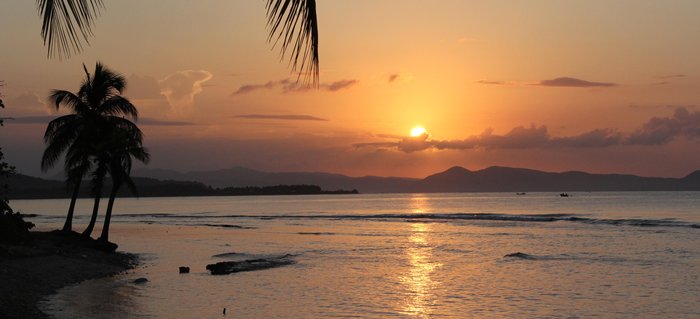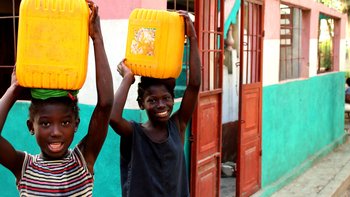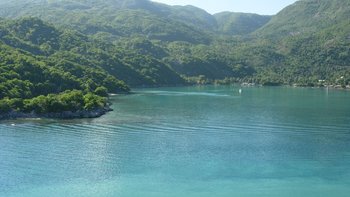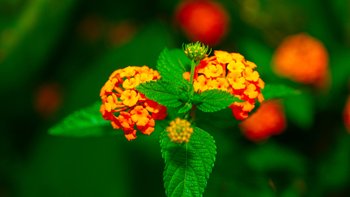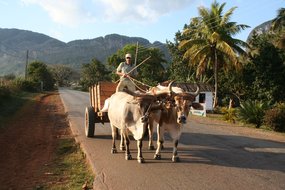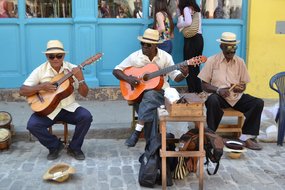Travel in Haiti with the specialist - INTI Tours
A destination for the experienced...
Traveling in Haiti, you will experience 1,700 km of Caribbean coastline and a blend of French colonialism, customs, music and food of African origin. No other country in the Caribbean has this special Haitian cultural mix. But Haiti has been hit hard by political and economic crises in recent decades and is a very poor country. The devastating earthquake of 2010 with the cholera epidemic that followed hit the country hard. Haiti is therefore only something for travelers who are well prepared for such a country and still want to experience it.
Bienvenue en Haïti!
Country information Absolutely worth seeing Facts and figures Travel in Haiti Addresses
Our types of travel in Haiti
You may also like this…
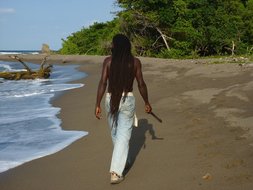
Jamaica Northeast
Reggae, sea and jungle: Jamaica's northeast offers the majestic Blue Mountains, lush tropical nature with diverse vegetation, friendly open-minded people and a fine sandy beach on the magnificent Caribbean coast.
12 days Gruppenreise 2 up to 12 travellers
upon request
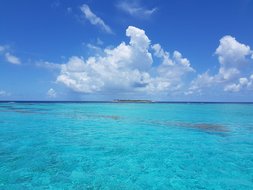
Caribbean Round Trip: Tobago, Trinidad, St. Lucia and Bequia
Caribbean round trip: Lonely snow-white sandy beaches, crystal clear sea, tropical rainforest, colorful coral reefs, picturesque villages, reggae music, exotic cocktails... Experience the most beautiful, largely undiscovered places of the Caribbean away from mass tourism!
15 days Gruppenreise 4 up to 12 travellers
upon request
Country information about Haiti: "Poorhouse of the Caribbean
Haiti is an island nation located on the island of Hispaniola in the Greater Antilles. It comprises the western third of the Caribbean island, the eastern part of which, and thus two-thirds, is occupied by the Dominican Republic. The Caribbean Sea spreads out to the south and the Atlantic Ocean to the north; Haiti has a total of 1,700 kilometers of Caribbean coastline. In the west, the approximately 95-kilometer-wide Windward Passage separates Haiti from the island of Cuba. With an area of 27,750 square kilometers, the country is about as large as Albania. The islands of Vache, Grande Cayemite, Gonâve and Ile de la Tortue also belong to the national territory. The name Haiti comes from the Taíno language and means "mountainous country" - in fact Haiti is the most mountainous country in the Caribbean. Between the mountain ranges, there are only a few larger plains, such as the Plaine du Nord and the Plateau Central in the south, which is about 300 meters high. The highest elevation in the country is the Pic de la Selle at 2,674 meters above sea level. The longest river in the country is the Artibonite, which rises in the Dominican Republic and flows into the Gulf of Gonâve after a length of about 170 kilometers. On Haiti's southeastern border, in the Cul-de-Sac plain, lies the Etang Soumâtre, a highly saline lake. The national territory of Haiti was originally covered by tropical forest, most of which has since been cleared. Less than 10% of the country's surface is still forested, resulting in soil erosion, desertification and species poverty. The plains are covered by dry and wet savannah with cacti, the coasts by mangrove forests. The largest cities include the capital Port-au-Prince, Carrefour, the port city Cap Haitien and Pétionville. Haiti was the first independent state in the Caribbean after the French colonial period. Haitian culture is very different from that of the surrounding countries of the Caribbean and the American double continent. It is particularly strongly marked by French and West African influences. In addition, remnants of Spanish or Taino culture can also be identified. It is the only country of the American double continent that is counted among the least developed countries in the world. In general, it should be noted that Haiti has been severely affected by political and economic crises in recent decades and is a very poor country. It is also still very much dealing with reconstruction after the devastating earthquake of 2010. As a travel destination, it is only recommended for experienced travelers.
Capital Port-au-Prince
Port-au-Prince is the capital and also the largest city of Haiti. It is located on the Gulf of Gonaïves quite in the south of Haiti. The city has about 1.3 million inhabitants, and about the same number of people live in the metropolitan area. The majority live in poor conditions on the slopes around the city. The area around Port-au-Prince was settled long before the arrival of the first Europeans by the Taíno, who came to the country from the area of present-day Venezuela around 2600 BC. When Christopher Columbus took possession of the country for the Spanish in 1492, several settlements were founded, but all were abandoned or destroyed by the French, or the English. Today's Haiti became a stronghold of pirates. As a result, the French crown decided to finally make the country a colony of theirs. Most of the pirates migrated from the area, which brought it more and more into the sight of English conquerors. To counteract an English conquest, the French finally founded the city of Port-au-Prince in 1749. In 1770, it replaced Cap-Haïtien as the capital of the French colony and became the capital of the independent state of Haiti in 1804. In 1861, Port-au-Prince became the episcopal see of the first Haitian archdiocese. In 1944, the Université d'État d'Haïti was founded. In January 2010, a severe earthquake occurred that destroyed large parts of the city; Haiti's prime minister spoke of more than 300,000 dead.
Absolutely worth seeing:
- To get a closer look at the capital, take a city tour. This includes visits to the National Palace, the Champs-de-Mars and places that show the extent of the destruction during the 2010 earthquake. The Marche de Fer market is worth a visit.
- A nice day trip from the capital is to Bassin Bleu Park. It consists of seven waterfalls carved into the cliff along with some caves for swimming.
Haiti's North:
The north coast of Haiti still has the most pristine green vegetation in the country. In addition, directly on the coast in a protected bay is the picturesque town of Cap-Haïtien, situated at the foot of mountains. It was founded in 1670 and was the capital of Haiti for centuries before it was moved to Port-au-Prince in the 19th century. Off the coast, the wreck of Christopher Columbus' ship Santa María from 1492 is said to lie at the bottom of the sea. After the extensive destruction of Port-au-Prince by the earthquake of 2010, Cap-Haïtien is the only city in the country that still has architecture worth seeing from the French colonial period. The buildings mostly date from shortly after 1842, when a severe earthquake devastated the city.
Absolutely worth seeing:
- A tour of the town of Cap-Haïtien brings back memories of better times. The cathedral is especially worth seeing; it dates back to 1670 and has survived all the riots and weather disasters so far. It is still the seat of the Catholic archbishopric of Cap-Haïtien.
- Sanssouci Palace was once the residence of Henri Christophe - the only king of Haiti. In its time, the palace was considered one of the most magnificent buildings in the Caribbean, intended to demonstrate Haiti's wealth and prosperity to visitors. In fact, the castle was only inhabited for seven years, from 1813 until the king's suicide in 1820. An earthquake in 1842 destroyed the magnificent castle, and the remains of the castle are now a UNESCO World Heritage Site.
- On the summit of the 970 meter high Pic Laferrière is the old high castle Citadel Laferrière from 1820, which was supposed to protect the country of Haiti from a possible French invasion. Today, the castle is considered a landmark of Haiti and is a UNESCO World Heritage Site. The view of the land and sea from the top is fantastic.
- For hiking enthusiasts, you can hike from the Sanssouci Palace to the Laferrière Citadel on an 11-kilometer, well-maintained trail.
Haiti's South:
- The southern coast of Haiti is highly sought after not only by foreign visitors, but also by local travelers as a beautiful vacation destination. The numerous picturesque beaches are particularly popular.
Absolutely worth seeing:
- The town of Jacmel impresses with a picturesque little harbor as well as a multitude of pretty wooden houses built in colonial style. Jacmel is reached by a spectacular mountain road.
- Civadier Beach spreads out about seven kilometers from Jacmel, nestled in a picturesque bay covered with coconut palms.
- Also on the Haitian south coast is the town of Kenscoff. It is located high in the mountains and is popular with locals as a vacation spot.
Facts and figures Haiti:
Land area: 27,750 sq. km
Population: a good 8 million, another 3 million Haitians are abroad. The largest population group with about 95 % are the descendants of black African slaves, mulattos make up about 5 % of the population.
Capital: Port-au-Prince with just under 1.3 million inhabitants, about double that in the metropolitan area.
Highest mountain: Pic de la Selle at 2,674 meters above sea level.
Form of government: presidential republic
History: In the decades following the discovery of the island of Hispaniola by Christopher Columbus in 1492, the indigenous original population of Taínos was almost completely exterminated. In the late 17th century, the island was populated primarily by African slaves who were used on the sugar plantations. In 1697, Spain ceded the western third of the island, from then on called Saint-Domingue, to France. This area became the richest colony of the French colonial empire in the 18th century. In 1791, there was a slave rebellion that turned into an extremely bloody war. The African-born ex-slaves prevailed in the end. In 1804, Haiti declared its independence from France. Haiti, the first independent republic of blacks, was committed to the abolition of slavery and also supported Venezuela, Peru and Colombia in their struggles for independence. Haiti suffered tyrannies throughout most of its history. In January 2010, an earthquake in the southern part of Haiti killed more than 300,000 people and destroyed the center of the capital. It remains one of the most devastating earthquakes in the world today. Nine months after the earthquake, the government declared a nationwide sanitary emergency following an epidemic outbreak of cholera disease.
Economy: Haiti is the poorest country in the Western Hemisphere. The illiteracy rate is about 40 %, although primary education is compulsory for six years. About 60 % of the population lives below the relative poverty line, and more than two-thirds of the working-age population has no regular job. Agriculture accounts for 24.7 % of GDP, industry about 19.5 % and services about 55.8 %.
Main exports: Haiti is the world's largest producer of vetiver essential oil for perfume.
Currency: Haitian gourde
Language: Creole
Festivals: Although Haiti has the Roman Catholic faith as its state religion and all church festivals are celebrated throughout the year, the Vodou cult is still omnipresent due to its African roots.
Carnival: Traditionally, the main event, called Mardi Gras, takes place on Shrove Tuesday. However, Carnival begins as early as January with smaller events held every Sunday.
Travel in Haiti:
Entry requirement: The valid passport must be valid for at least six months at the time of entry. German citizens do not require a visa for entry and a stay of up to 30 days. Upon arrival, an entry form and a customs declaration must be completed. A section of the entry form must be presented again upon departure. A ticket for onward or return travel must also be presented.
Vaccinations: No mandatory vaccinations are required for direct entry from Germany. For entry from a yellow fever area, proof of a yellow fever vaccination is required. Make sure that you and your children are up to date with the standard vaccinations according to the vaccination calendar of the Robert Koch Institute. As travel vaccinations, vaccinations against hepatitis A are recommended, and also against hepatitis B, typhoid and rabies for long-term stays or special exposure.
Climate & Travel Time: The climate in Haiti is tropical. Since the island is located between the 18th and 20th degrees of latitude north, there are only slight temperature differences during the year. On average, the thermometer rises to 30 degrees Celsius during the day. In July and August it gets a little warmer with about 35 degrees Celsius. It gets cooler in December, January and February. The lows in winter are about 22 degrees Celsius. In the mountains, the average temperature is about 18 degrees Celsius. Haiti has a total of two rainy seasons. One between April and June and one from August to November. Since Haiti is repeatedly influenced by trade winds, the north belongs to the rather dry regions according to the climate table. There only about 500 to 900 mm of precipitation fall in the year. In the plateau and in the southwest, the amount is already 2,600 mm. The months of December, January and February are particularly dry. Since Haiti lies directly on the hurricane belt, there is a risk of tropical storms between August and October.
Best time to visit: The best time to visit Haiti is June, July, December and March. During this time it is not so hot and it is mainly dry.
Local time: CET -5 hrs. CEST -6 hrs.
Addresses:
Embassy Haiti
Uhlandstraße 14
10623 Berlin
Tel. 030-88 55 41 34
secretariat@ambassade-haiti.de
www.embassyofhaitigermany.org


